The Fraught and Fruitful Future of Fungi
The humble fungi are part of our daily lives from food and therapy to entertainment and biomaterials.
Published August 1, 2024
By Nick Fetty
Digital Content Manager
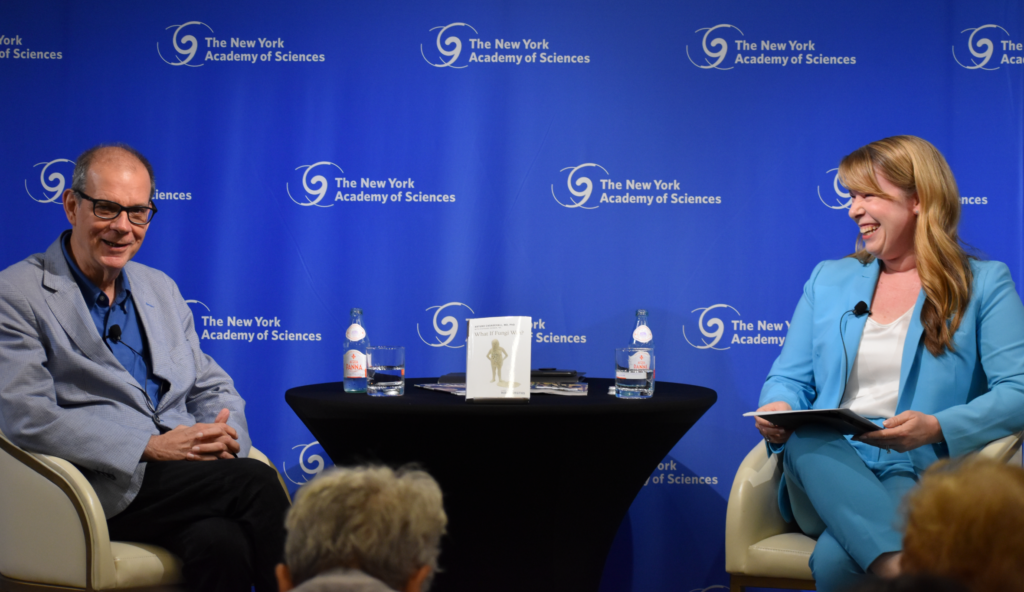
What If Fungi Win? Immunologist and mycologist Arthuro Casadevall, MD, PhD, posed such a question in his recently published book, penned with co-author Stephanie Desmon, MA. It was also the topic of the final installment of the 2024 Authors at the Academy Series, moderated by Chief Scientific Officer Brooke Grindlinger, PhD, at The New York Academy of Sciences.
The Characteristics of Fungi
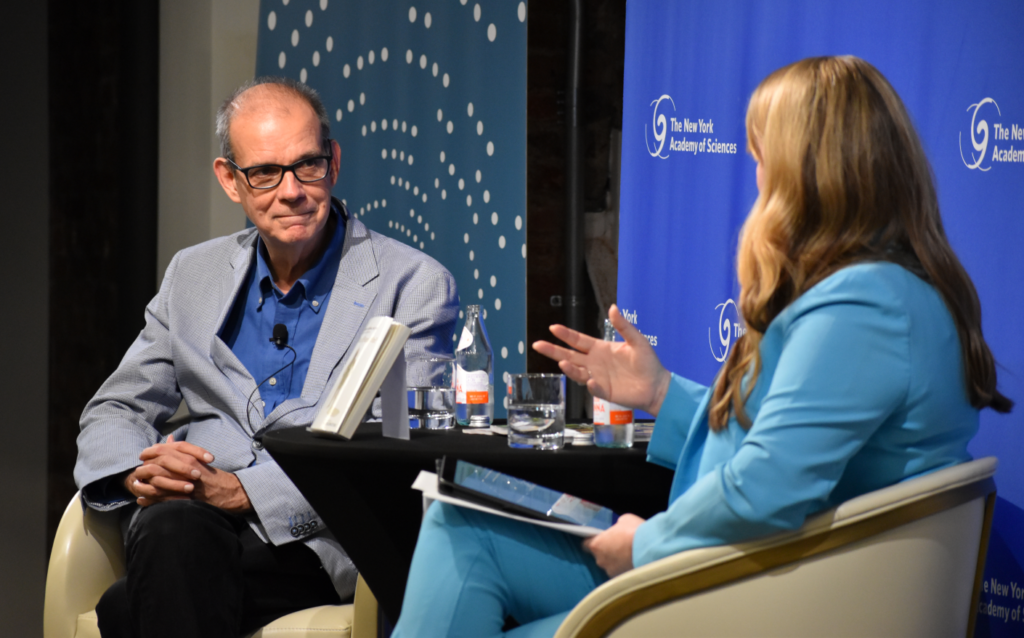
It might be the stuff of a 1950’s horror movie, but the humble fungus may have “superpowers” that allows it to thrive in the face of natural disasters like tornadoes, hurricanes, and wildfires, because of its ability to break up dead plant and animal matter.
Dr. Casadevall serves as a Bloomberg Distinguished Professor and the Alfred and Jill Summer Chair of the Department of Molecular Microbiology and Immunology at Johns Hopkins School of Public Health.
In his book, he proposes a new field of study that he dubs “Disaster Microbiology.” He credits his former student and current postdoc, Daniel F. Q. Smith, PhD, for helping to come up with the idea.
One example of this is the Permian Extinction, which occurred roughly 250 million years ago. Considered “the greatest natural disaster in Earth’s history,” this catastrophic event wiped out roughly 90 percent of earth species at that time. Geological evidence from this era shows one meter of fossilized fungal spores which were nourished by the dead plant and animal matter left behind from the extinction.
“We don’t often think any disturbance of the planet disturbs the microbes,” said Dr. Casadevall. “When you have a calamity, it not only changes the world you see, but it also changes the microbial world. And this microbial world can be so changed that it will contribute to the calamity.”
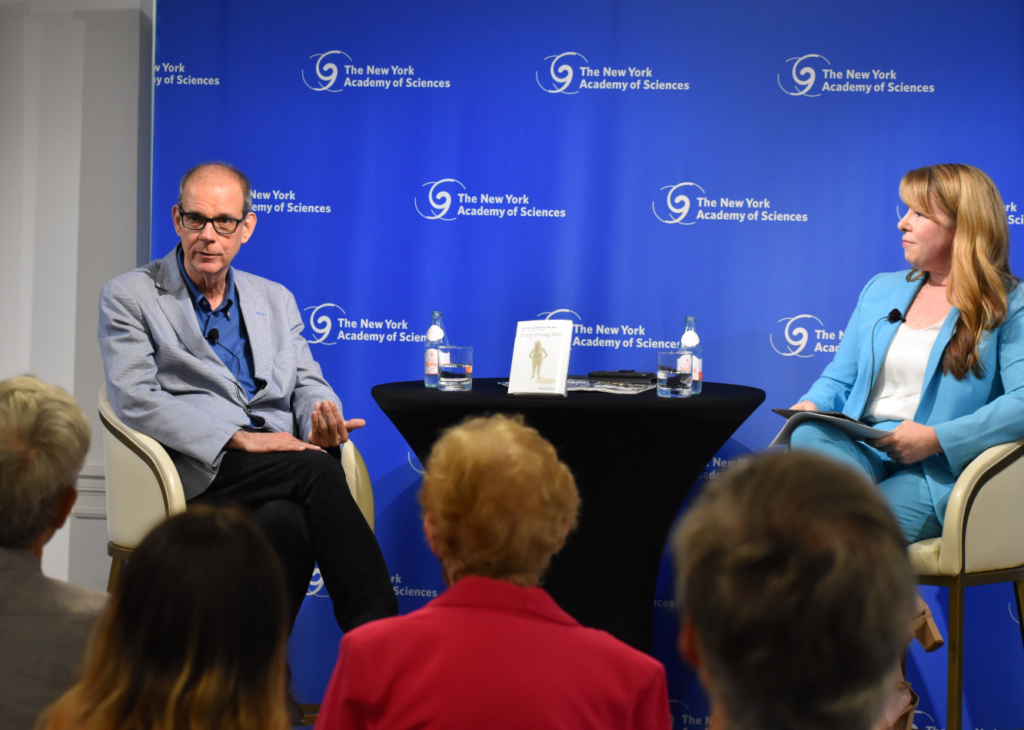
Fungi and Manmade Disasters
Fungi has also been observed in the aftermath of manmade disasters such as the 1986 Chernobyl Nuclear Power Plant incident. A chemical fire led to a meltdown that ultimately rendered the area around the plant essentially unlivable.
Government officials built a concrete sarcophagus around the reactor to prevent further radiation contamination. By the late 1990s, concerns arose around the concrete structure collapsing and therefore emanating radioactive dust as far as the wind would carry it.
Researchers then dispatched robots to study the land in this contaminated area. The robots observed black on the walls of the old nuclear facility, that turned out not to be soot from the fire, but instead it was fungus that makes melanin.
“We think that this fungus is using melanin to collect radiation for food,” Dr. Casadevall said. “So, it’s an example of resilience in an area of tremendous radiation.”
Fungi’s Role in Extinction
Dr. Casadevall explained that most pathogenic organisms do not cause extinction. He used the example of viruses that require a host, humans for example. It wouldn’t make sense for the virus to drive its host into extinction because the virus would die too – but fungi can.
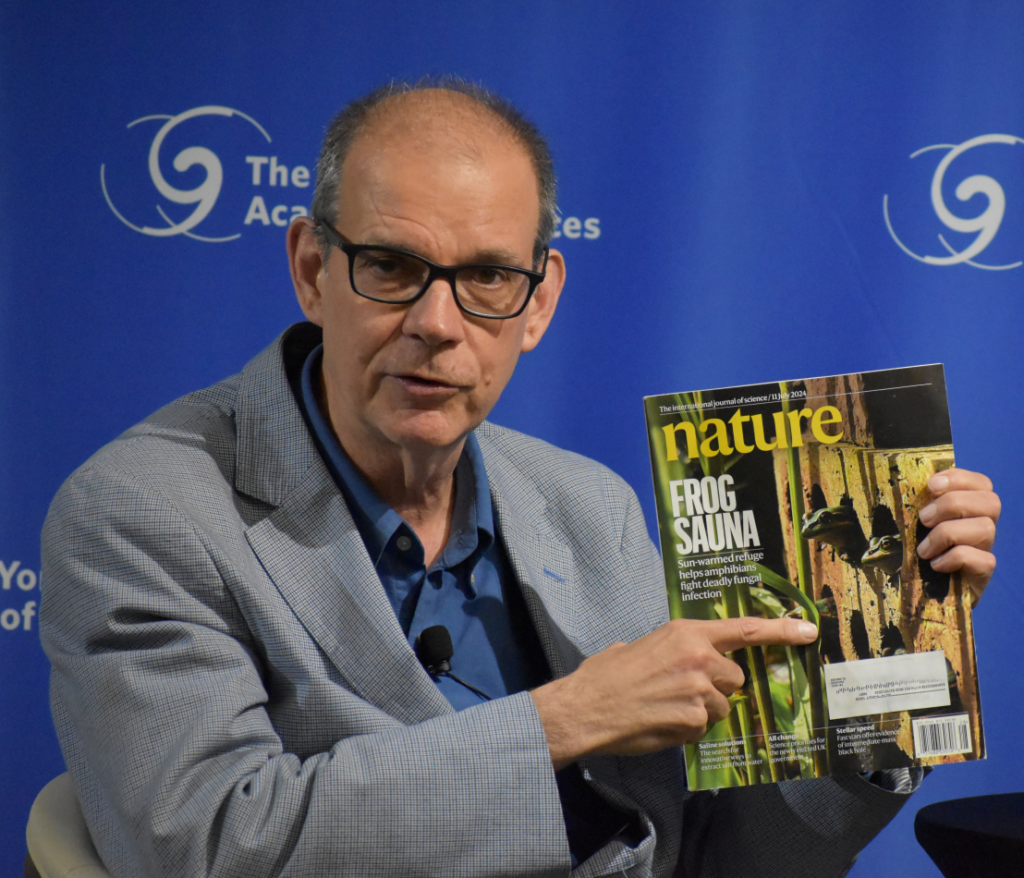
Roughly 100 known species of frogs were wiped out by chytrid fungus. When the frogs’ bodies eventually decomposed, the fungus was released back into that body of water, furthering its spread.
A similar fungal impact was observed on bat species in the United States around 2006, when a scientist discovered dead bats strewn across the floor of a cave in upstate New York. Upon further investigation, he observed those dead bats had a white fuzz in their nose which became known as “white nose syndrome.”
Researchers found that bats are only susceptible to this condition in the winter during hibernation, when the bat’s temperature typically drops to 12 degrees centigrade. During the summers, their temperature rises to 37 degrees centigrade, allowing surviving bats to fight off the fungus. However, they can be reinfected again during the following winter.
Bats are crucial to the overall health of our environment. They are pollinators and consume millions of mosquitoes and other insects each year. Researchers are developing a vaccine to prevent further casualties, which number in the millions. This is critical to the survival of the species because of their relatively slow rate of reproduction, averaging a single offspring per couple every year.
“The losses in North American bats cannot be replaced very easily. It will probably take centuries,” said Dr. Casadevall. “[Fungi have] driven multiple species to extinction.”
Fungi, Flora, and Climate Change
Forty percent of human caloric consumption comes from wheat, corn, and rice. These three staple crops are susceptible to fungal pathogens because of their similar genetic composition. Dr. Casadevall thinks that fungi’s potential impact on crops are potentially highly detrimental.
“To me, the nightmare scenario is if we lose two [crops] at the same time because humanity can’t make up the calories,” he said, adding that to mitigate this, researchers are genetically engineering resistant strains.
While the human body temperature serves as a thermal shield against many fungi, Dr. Casadevall argues that climate change is chipping away at its effectiveness. He said that the hot days that New Yorkers and others have dealt with this summer are “selection events” in the microbial world where fungi must “adapt or die.”
“Most fungal species cannot grow at 37 degrees centigrade. You’re shielded from them by your temperature,” Dr. Casadevall explained. “But if they adapt, then our thermal defenses can’t keep them off.”
The emerging fungal pathogen Candida auris, a type of yeast that can cause severe illness in humans, was unknown to the medical world until 2009. In the following years it would be detected in South America, Africa, and Asia. These strains are not related, meaning it wasn’t transported by a single source. It was then detected in Iran and Russia, which led Dr. Casadevall to suspect that temperature is the throughline.
“That may be the first fungus that became a new fungal pathogen by adapting to temperature,” he theorized.
While global temperatures are rising, Dr. Casadevall pointed out that research suggests the average human body temperature has declined by about two-thirds of a degree over the past century. This is partly because, with more effective treatments available today, people are not as susceptible to infectious diseases as they were 100 years ago, when a higher body temperature might have provided added protection against disease.
15 Minutes of Fame
Fungi has even seeped into popular culture.
Dr. Casadevall explained that the largest organism on earth is located in Oregon and known colloquially as the “humongous fungus” (Armillaria ostoyae). This fungus is larger than Central Park in area and weighs as much as a World War II battleship.
Upon the release of the popular video-game-turned-television-series The Last of Us, reporters approached him to better understand if the premise of the show was feasible or pure science fiction. The show is set in a post-apocalyptic world which includes cannibalistic, zombie-like humans infected by a mutant fungus from the Cordyceps family.
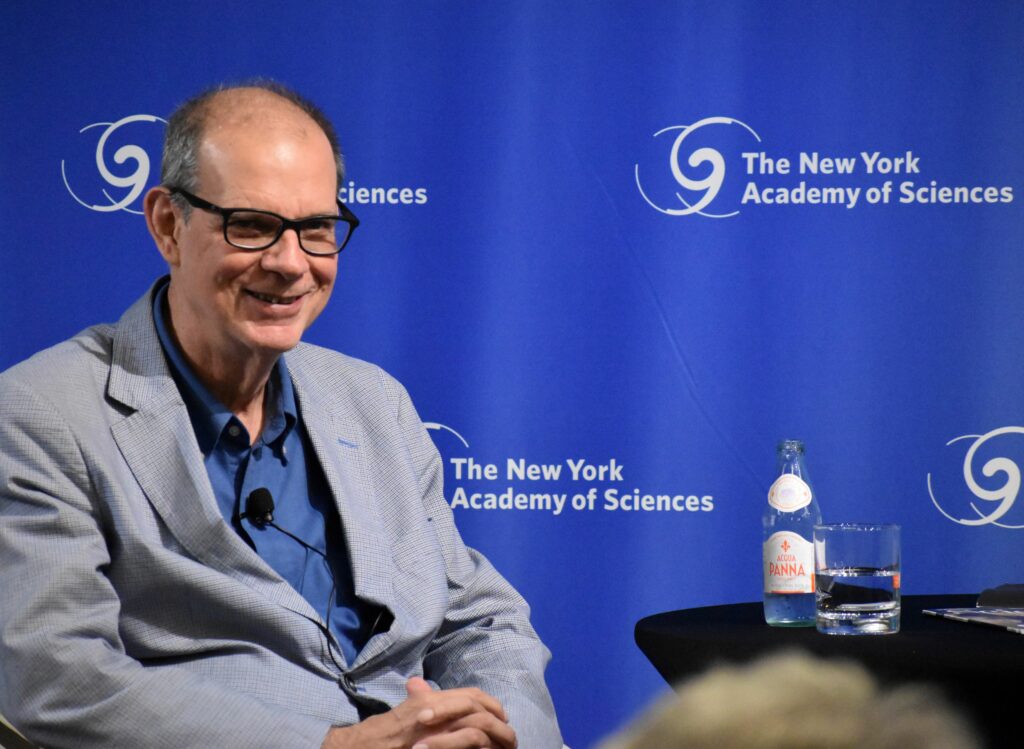
“I had my fifteen minutes of fame. Everybody wanted to talk to me,” Dr. Casadevall said with a laugh, adding that when asked “Can this happen?” his answer was simply “Unlikely, but not impossible.”
He explained it was “unlikely” because there aren’t currently any instances of a fungi overtaking a human. However, this phenomenon has been observed in ants.
“In science you never say ‘never’ except for things that can’t happen,” he said, adding that some fungi have hallucinogenic properties that may not impact a person’s appearance but can certainly impact their behavior.
“The Biomaterials Age”
Much like previous eras have been defined by different materials (The Stone Age, The Bronze Age, etc.), Dr. Casadevall suggests contemporary times can be referred to as “The Biomaterials Age.” Biodegradable fungal leather is one example.
“Fungi can actually be grown into the shape of a purse,” Dr. Casadevall said.
It also creates melanin much like human skin naturally produces. The fungi melanin offers radiation protection much like a material such as lead, but at a lighter weight. NASA has expressed interest in using fungi for radiation protection.
“This is not science fiction. Imagine you want to shield a spacecraft, all you have to do is bring a spore into orbit and then grow the fungi in place,” said Dr. Casadevall, adding that onboard fungi cultivation efforts can double as a source for nutrients and energy capture.
Additionally, fungi have demonstrated potential to breakdown otherwise nonbiodegradable plastics. These plastics are broken down into their constituting components – carbon, nitrogen, oxygen – which are returned to the biosphere.
The MycoCoolerTM
An accomplished inventor, Dr. Casadevall is quite familiar with the rigors of the patent process. He joked that when he and his colleague, Radamés J.B. Cordero, PhD, submitted their application for a fungi-based air conditioner, “it was the only time in my life I had a patent go right through and was accepted.”
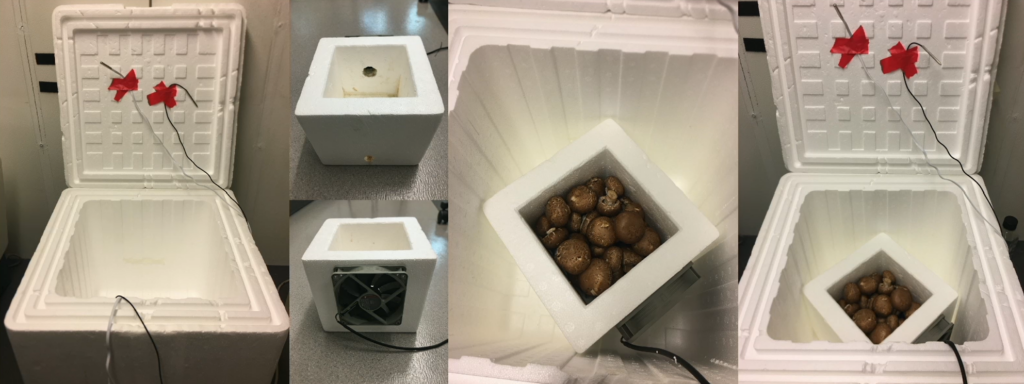
The idea was birthed quite by accident. For a separate project, Dr. Casadevall and other researchers set up thermal cameras in a forest. After a rain they observed that the mushrooms were emitting a coolness relative to the environment. While humans are hyperthermic, meaning human bodies are generally warmer than their environment, fungi are hypothermic, the opposite.
The MycoCoolerTM consists of a small Styrofoam cooler full of whole mushrooms and water, placed inside of a bigger Styrofoam cooler, with a few wires and a small computer fan to circulate the cool air.
“We argued that you can keep your beer relatively cold, and, as soon as the mushrooms run out of water, you eat them,” Dr. Casadevall said, followed by laughs from those in attendance.
Despite the potentially intimidating title of his book, to which Dr. Casadevall says “the fungi have already won,” he ends things on an optimistic note writing “science is humanity’s best insurance policy.”
“The invention of science, I believe, is the greatest invention of humanity,” he said in closing. “Science will give us the tools to survive.”
Check out the other events from our 2024 Authors at the Academy Series
- Reid Hoffman – Impromptu: Amplifying Our Humanity Through AI
- Erika Nesvold – Off-Earth: Ethical Questions and Quandaries for Living in Outer Space
- Venki Ramakrishnan – Why We Die: The New Science of Aging and the Quest for Immortality
- Claudia de Rham – The Beauty of Falling: A Life in Pursuit of Gravity
Full video of these events is available, please visit nyas.org/ondemand
